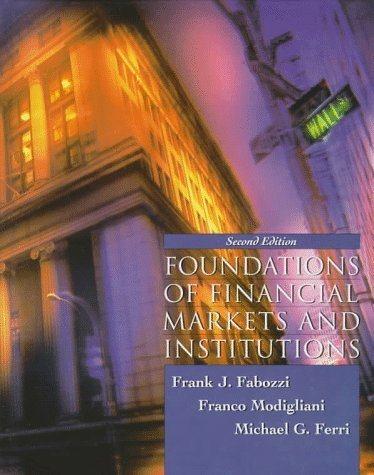

2. The current price of the company's 18-year, 6 percent coupon (semiannual interest payments) bond is $898.55. The bond has a face value equal to $1,000. New bonds can be issued with no discernable flotation costs. 3. The current price of the firm's 9.5 percent, $90 par value preferred stock is $107. The firm will incur flotation costs of 6 percent to issue new preferred stock. 4. The company's common stock is currently selling at $70 per share. Its last dividend (D0) was $4, and dividends are expected to grow at a constant rate of 5 percent in the foreseeable future. 5. Up to $330,000 of new common stock can be sold at a flotation cost of 14.3 percent. Above $330,000, the flotation cost would rise to 25.0 percent. 6. The firm's target capital structure is 25 percent long-term debt, 20 percent preferred stock, and 55 percent common equity. 7. The firm expects to generate $440,000 of new retain earnings in the coming year. Following are questions you must answer. Make sure you SHOW AND LABEL ALL YOUR WORK for the required computations. 1. What is the yield to maturity on the company's existing debt? What is the firm's after-tax component cost of debt, rd ? 2. What is the firm's cost of preferred stock, rps ? 3. Why is there a cost associated with retained earnings? What is the estimated cost of retained earnings, rs ? using the discounted cash flow (DCF) approach? 4. What is the firm's cost of common equity for up to $330,000 of newly issued stock, re1 ? What is the cost of common equity if more than $330,000 of new common stock is issued, re2 ? 5. Explain in words why new common stock, re, has a higher percentage cost than the cost of retained earnings, rs. 6. Compute the firm's weighted average cost of capital (WACC) for the following situations: A. What is the firm's overall, or weighted average (WACC) when only retained earnings are used as the equity component; i.e., when no new common equity is needed? B. What is the WACC after retained earnings have been exhausted and the firm issues up to $330,000 of new common stock with a 14.3 percent flotation cost? C. What is the WACC if more than $330,000 of new common equity is sold? 7. Compute the breakpoints for the following situations: A. What is the largest capital budget the company could support without issuing new common stock? Assume the existing target capital structure will be maintained. B. At what amount of new investment would the company be forced to issue new common stock with a 25 percent flotation cost? 8. The company's director of capital budgeting has identified the following potential projects: The projects are independent and equally risky. Which project(s) should be purchased? Explain why








